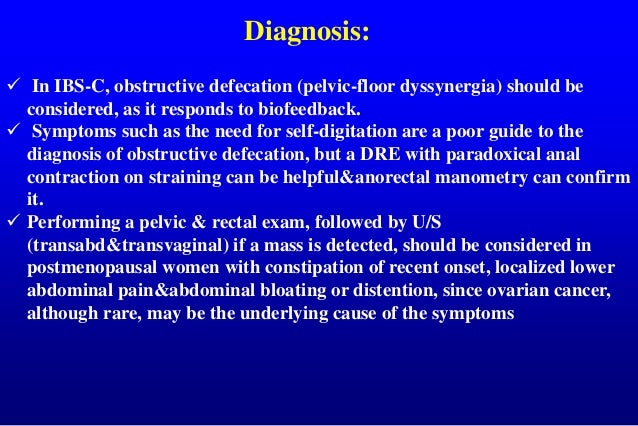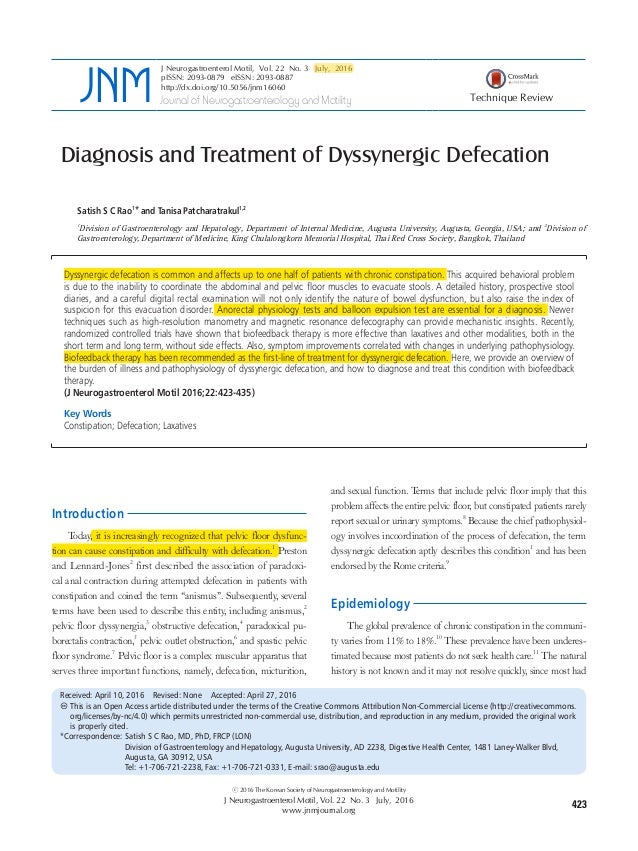Pelvic floor dyssynergia is a condition in which the external anal sphincter and the puborectalis muscle contracts rather than relaxes during an attempted bowel movement.
Pelvic floor dyssynergia diagnosis.
There is the sensation of incomplete emptying of the rectum.
Damaged muscle neurological i e.
Disease of the brain or pathological issue i e.
International foundation for functional gastrointestinal disorders.
Pelvic floor dysfunction expanded version.
When you have pelvic floor dyssynergia pelvic dyssynergia the muscles in your pelvic floor become uncoordinated.
Dyssynergic defecation is considered to be the result of pelvic floor dysfunction in that the muscles and nerves within the pelvic floor are not functioning as they should.
A common name for it in the past was anismus.
Pelvic floor dysfunction pelvic floor dysfunction is the inability to correctly relax and coordinate your pelvic floor muscles to have a bowel movement.
American society of colon and rectal surgeons.
Normal bowel movements involves relaxation of both of these muscles.
Learn about the symptoms and treatment options.
We are working closely with our technical teams to resolve the issue as quickly as possible.
Anismus is the failure of normal relaxation of pelvic floor muscles during attempted defecation it can occur in both children and adults and in both men and women although it is more common in women.
Pelvic floor dyssynergia is an unintentionally acquired behavioural issue often referred to as a functional issue rather than a structural i e.
The most common outcome of pelvic floor dyssynergia is issues with defecation.
Apd and pelvic outlet constipation likely occur together because the pelvic floor and diaphragm have a pressure relationship.
Symptoms of pelvic floor dyssynergia.
This makes it difficult to have a bowel movement.
Symptoms include constipation straining to defecate having urine or stool leakage and experiencing a frequent need to pee.
Your pelvic floor includes muscles and connective tissue that support your bladder rectum and other pelvic organs.










